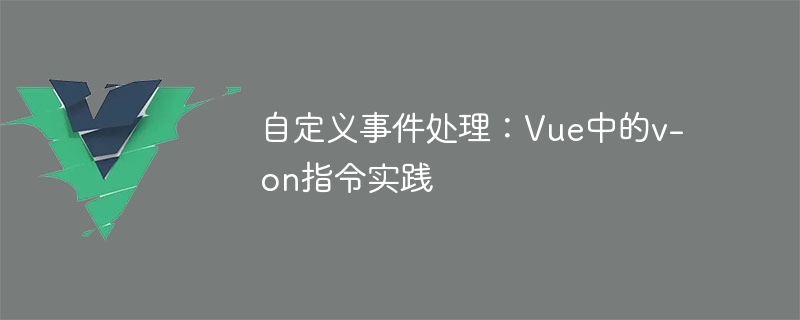

Custom event handling: v-on directive practice in Vue
Vue.js is a popular front-end framework that provides many convenient directives and functions to simplify the development process. One very useful directive is v-on, which is used to handle user events.
v-on directive can bind a custom event handling function to the specified DOM element. It uses a simple syntax that allows you to write event handling functions directly in the template, or reference methods in the component by specifying the method name.
The following are some common uses of the v-on directive:
In the instance of the component, we can define a method named handleClick to handle the click event:
methods: { handleClick() { console.log('点击了按钮'); } }
For example, we can use inline expressions to bind a dynamic event handling function:
In the instance of the component, we need to define two methods, handleClick1 and handleClick2 :
methods: { handleClick1() { console.log('点击了按钮1'); }, handleClick2() { console.log('点击了按钮2'); } }
In this example, the button will be bound to different event handlers based on the value of isClicked.
For example, we can change the text of the button by passing parameters:
In the instance of the component, we can define the changeText method to change the text of the button:
methods: { changeText(newText) { this.text = newText; } }
In this example, when the button is clicked, the changeText method will be called, passing in the parameter 'new text'.
In addition to the above examples, the v-on directive also supports other common DOM events, such as keypress, mouseenter, mouseleave, etc. By using the v-on directive, we can easily handle various user events and execute corresponding logic as needed.
To sum up, the v-on directive is an important tool for handling custom events in Vue.js. It provides a simple and easy-to-use syntax, allowing developers to easily handle user events and bind them to component methods. By flexibly using the v-on directive, we can greatly improve the interactivity and scalability of Vue.js applications.
Hope the above content can help you better understand and apply the v-on directive in Vue.js. In actual development, you can choose the appropriate usage according to specific needs and continuously improve your application through practice. Proficient in the v-on directive will help you develop better Vue.js applications.
The above is the detailed content of Custom event handling: v-on directive practice in Vue. For more information, please follow other related articles on the PHP Chinese website!